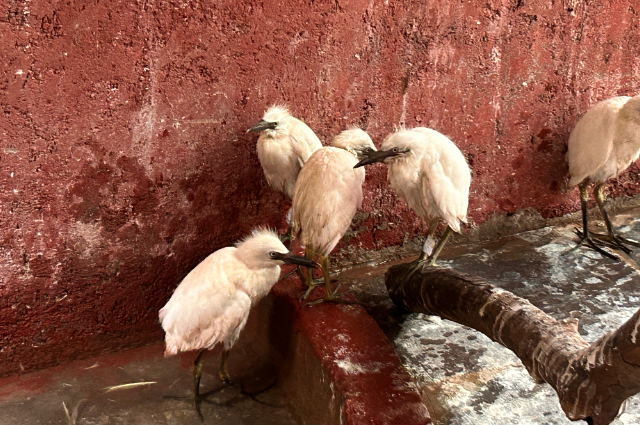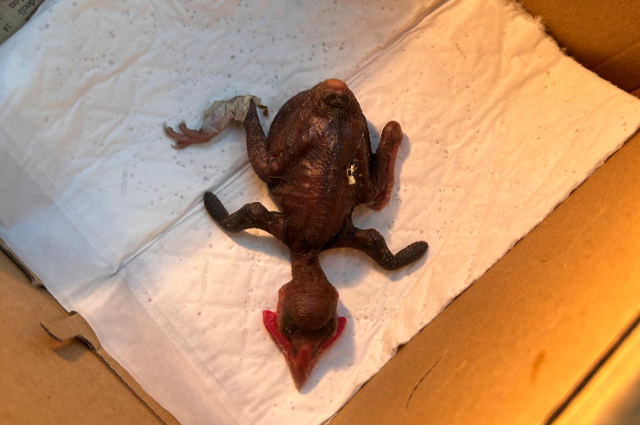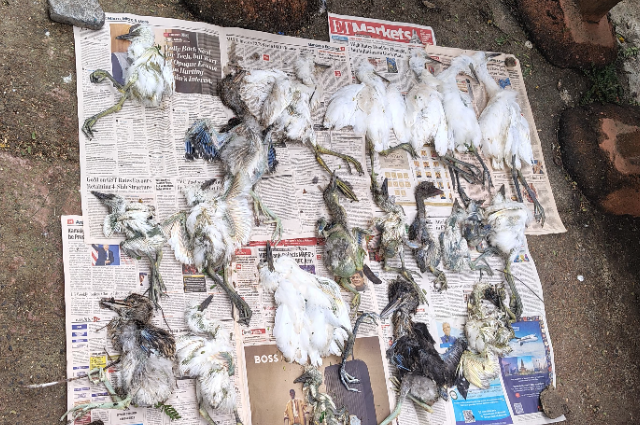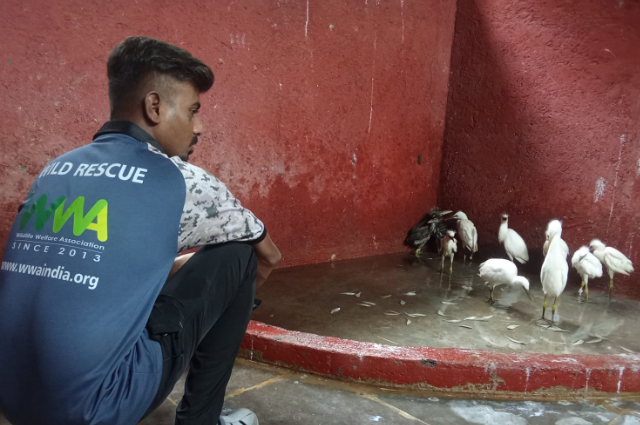
Image by Wildlife Welfare Association (WWA)
A heartbreaking wildlife tragedy unfolded at the Rutu Enclave Cooperative Housing Society on Ghodbunder Road in Thane, where a routine tree maintenance operation turned into an environmental disaster. The incident resulted in the deaths of 45 herons and left another 27 birds injured, highlighting critical gaps in our urban environmental protection protocols.
The catastrophe occurred during what was supposed to be a standard tree trimming exercise within the residential complex. While the housing society had obtained proper authorization from the Thane Municipal Corporation (TMC) the previous week to trim between 15 to 20 trees in their premises, including recreational areas, the execution of this permission appears to have gone drastically wrong.
Investigation Reveals Potential Violations: Forest Department's Response
Range Forest Officer Dinesh Desale has confirmed the severity of the situation, officially recording the deaths of 45 herons alongside injuries to 27 others. While acknowledging that the tree trimming had TMC approval, the forest department has launched a comprehensive investigation to determine whether the society adhered to the specific guidelines outlined in their permission letter.
According to forest department officials who spoke on condition of anonymity, the incident appears to involve a significant violation of established environmental norms. Standard regulations stipulate that tree trimming permissions should only allow for the removal of up to 20% of a tree's branches. However, preliminary investigations suggest that the society and its contractors exceeded these limits dramatically, trimming more than 50% of the branches which reflects a clear misbehaviour of approved guidelines.
Timeline of the Tragedy: The Fatal Operation Begins
The tree trimming operation commenced around 1:30 PM, carried out by a private contractor hired by the housing society. What should have been a carefully controlled maintenance activity quickly spiralled into a wildlife emergency. The tragedy came to light approximately 30 minutes later around 2:00 PM, when an alert resident of the housing complex discovered multiple dead birds scattered on the ground. This resident immediately contacted the Mypalclub Foundation, a local non-governmental organisation dedicated to rescuing stray animals throughout Thane city.
Community Mobilization
Word of the incident spread rapidly through local environmental networks. Nishant Bangera, founder of the Muse Foundation where an NGO focused on environmental issues had arrived at the scene along with volunteers from the Mypalclub Foundation. These activists promptly reported the incident to the TMC, though they later criticized civic officials for their apparent reluctance to respond with appropriate urgency.
Multi-Agency Response Coordination
As news of the wildlife emergency spread, animal welfare advocates and rescue teams from across the region converged on the site. The civic body's disaster management cell eventually responded to the scene with officials confirming that their first notification came from bird rescuer Rohit Mohite.
The severity of the incident necessitated a multi-departmental response. Teams from the Kasarvadavali police station, forest department, Wildlife Welfare Association (WWA), Mypalclub Foundation, and the municipal tree authority all arrived to assess the situation and begin rescue operations. Officials confirmed that numerous bird nests containing unhatched eggs were completely destroyed during the trimming operation. The scale of the destruction extended beyond adult birds to impact future generations of the heron population.
Disturbing Recovery Efforts

Image by Wildlife Welfare Association (WWA)
Rescue workers discovered deeply troubling evidence of the incident's severity. Five birds were found deliberately stuffed inside a sack, while several others were located in open gutters around the property. These findings suggest either gross negligence or deliberate misconduct during the trimming process. A volunteer from the Mypalclub Foundation described receiving distressing video footage from residents showing the full extent of the tragedy. The footage revealed dead and injured birds scattered throughout the area, alongside broken nests and destroyed eggs. Particularly heartbreaking was the discovery that many of the casualties were young fledglings who were either crushed beneath falling branches or thrown from their nests during the operation.
Ignored Pleas for Mercy
Despite repeated requests from animal welfare volunteers and concerned residents to stop the destructive activity, both the contractors and housing society members reportedly continued with the tree-trimming operation, showing heartless disregard for the wildlife casualties rising around them.
Society resident Vivek Vadke defended their actions, stating that proper permissions had been obtained for the tree trimming operation. He characterised the heron population as creating unsanitary conditions around the residential complex through their nesting activities and waste, suggesting the birds were viewed primarily as a nuisance rather than valuable urban wildlife.

Administrative Silence
Housing society leadership, including the chairman, remained unavailable for comment as they were engaged in discussions with forest department officials and police regarding the incident. This administrative silence has only added to public concern about the society's accountability for the tragedy.
Broader Implications for Urban Wildlife Protection
This tragic incident exposes critical weaknesses in our urban environmental protection systems. While permission processes exist for tree maintenance activities, the enforcement and monitoring of compliance with environmental safeguards appears inadequate.
The Rutu Enclave tragedy underscores the urgent need for better integration of wildlife conservation considerations into urban planning and maintenance activities. As cities expand and human-wildlife interactions increase, we must develop more sophisticated approaches to managing these relationships responsibly.
Call for Systemic Reform

Image by Wildlife Welfare Association (WWA)
Moving forward, this incident should serve as a catalyst for comprehensive reforms in how we approach urban tree management, particularly in areas known to support wildlife populations. Enhanced training for contractors, stricter oversight of permitted activities, and more severe penalties for violations must all be part of a renewed commitment to protecting urban ecosystems while meeting legitimate municipal maintenance needs.
The rescue team's findings were deeply troubling. They recovered 45 deceased birds, including various species such as cattle egrets, pond herons, and a jungle crow, along with destroyed nests and eggs. Additionally, they found 26 birds that were critically injured and required immediate medical attention. Evidence suggested the harmful activities had been continuing for at least ten days, as indicated by the discovery of a decomposing bird carcass. In an attempt to conceal their actions, the contractors had placed many of the dead birds in plastic bags and disposed of them in a drainage system.
The injured birds were promptly transported to Dr. Hemant for ongoing medical treatment. This incident represents a clear breach of environmental and wildlife protection regulations, as the contractor failed to follow proper safety measures, resulting in unnecessary animal suffering and death. The coordinated response involved the rescue team, My Pal Club, and the Forest Department, all working together to address this wildlife protection violation and continue their efforts to combat animal cruelty while protecting urban wildlife populations.
. . .
References:
